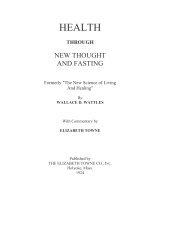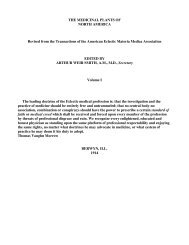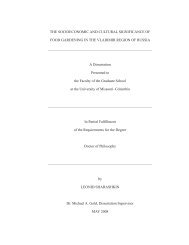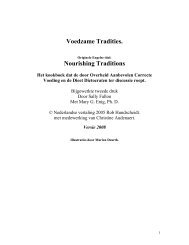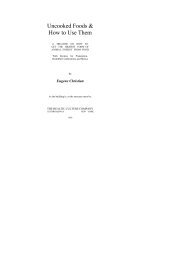FACTORS OF SOIL FORMATION - Midlands State University
FACTORS OF SOIL FORMATION - Midlands State University
FACTORS OF SOIL FORMATION - Midlands State University
You also want an ePaper? Increase the reach of your titles
YUMPU automatically turns print PDFs into web optimized ePapers that Google loves.
soluble salts and colloidal particles. Their minima and maxima are<br />
named with capital letters A, referring to minima, B, referring to<br />
maxima, and C, which applies to the horizontal branch of the curve.<br />
The interpretation of the horizons is as follows:<br />
Horizon A: Eluvial horizon, or leached horizon. Material has been<br />
removed from this zone.<br />
Horizon B: Illuvial horizon, or accumulation horizon, in which<br />
substances, presumably from A, have been deposited.<br />
FIG. 5.—Colloidal clay and CO 2 of carbonates as a function of depth of a clay-pan soil.<br />
The maxima of these two soil properties do not occur at the same depth.<br />
Horizon C: Parent material, from which the soil originated.<br />
Frosterus (2) designates the zone of maxima and minima (A + B)<br />
as solum. Variations within the horizons are indicated by subscripts,<br />
like A 1 and A 2, or, B 1 , B 2 , B 3 , etc. Organic-matter deposits on top of<br />
the mineral soil are often labeled as A 0 , F, H, etc.<br />
If it so happens that several soil characteristics have maxima and<br />
minima that coincide spatially, as in Fig. 4 (podsol profile), the ABC<br />
terminology affords an easy means of describing and classifying soil<br />
profiles.<br />
Not all soils possess such simple patterns. In the clay-pan soil<br />
shown in Fig. 5, the maximum for the carbon dioxide content<br />
(carbonates) occurs at greater depth than the peak of the colloid (clay<br />
particles). Assignment of the letters A and B is left to individual<br />
judgment. In the United <strong>State</strong>s, the accumulation horizon frequently,<br />
but not exclusively, refers to the zone of enrichment in clay particles,<br />
and some uncertainty in horizon designations still exists.<br />
The difficulty of horizon designation is accentuated in soils<br />
derived from anisotropic parent materials such as stratified sand and<br />
of fact, there exists great need for rigorous criteria of horizon<br />
identification, because all scientific clay deposits. As a matter systems<br />
of soil classification as well as the theories regarding soil<br />
development rest on horizon interpretations.




